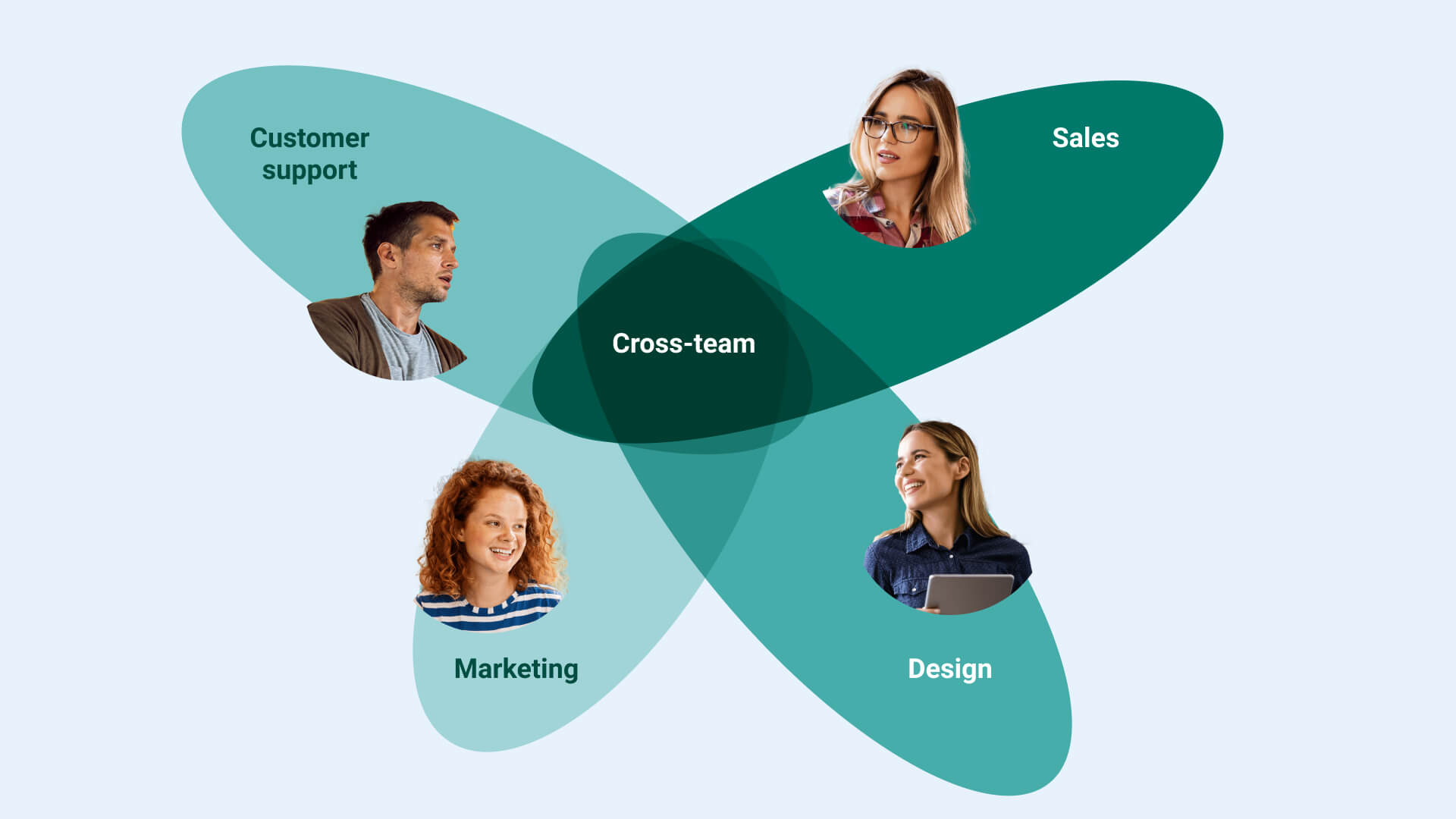Harnessing Innovative Product Development: Strategies and Approaches
Innovative product development is the process of creating new products or services that meet the needs of consumers in a new and improved way. It is a critical driver of economic growth and competitiveness, and it is essential for businesses to stay ahead of the curve in today's rapidly changing marketplace.
There are a number of strategies and approaches that businesses can use to harness innovative product development. One important step is to create a culture of innovation within the organization. This means fostering a creative environment where employees are encouraged to come up with new ideas and take risks. Businesses should also invest in research and development (R&D) to identify new technologies and market trends.
Another key strategy is to focus on customer needs. Businesses should regularly survey their customers to understand their needs and pain points. This information can then be used to develop new products and services that meet those needs. Businesses can also partner with customers to develop new products and get feedback early on.
Finally, it is important to be agile and adaptable in the product development process. Businesses need to be able to quickly pivot and adapt their plans in response to changing market conditions and customer feedback. This requires a flexible and cross-functional team that can work together to bring new products to market quickly and efficiently.
Let's discover specific examples of innovative product development strategies and approaches:
-
Use design thinking. Design thinking is a human-centered approach to innovation that focuses on understanding the needs of users and developing solutions that meet those needs. Businesses can use design thinking to develop new products, services, and experiences that are truly innovative.
-
Use data and analytics. Data and analytics can be used to identify new opportunities for product development. Businesses can analyze customer data to understand their needs and pain points. They can also analyze market data to identify trends and opportunities.
-
Use rapid prototyping. Rapid prototyping is a process of developing and testing prototypes quickly and cheaply. This allows businesses to get feedback on new ideas early on and make necessary adjustments before investing in full-scale production.
-
Use open innovation. Open innovation is a process of developing new products and services with the help of external partners, such as customers, suppliers, and universities. This can help businesses to access new ideas and resources.
By following these strategies and approaches, businesses can harness innovative product development to create new products and services that meet the needs of consumers in a new and improved way.
Thinking Outside the Box: Cultivating a Culture of Innovation
Thinking outside the box is essential for innovative product development. It requires challenging the status quo and coming up with new and creative ideas. To cultivate a culture of innovation, businesses need to create an environment where employees feel comfortable taking risks and sharing their ideas.
That is good to know a few tips for cultivating a culture of innovative product development:
-
Encourage employees to think big. Don't shoot down new ideas, no matter how crazy they may seem. Encourage employees to think big and come up with new and innovative solutions to problems.
-
Create a safe space for failure. Failure is a natural part of the innovative product development process. It's important to create a safe space for employees to fail without fear of punishment. This will encourage them to take risks and try new things.
-
Reward innovation. When employees come up with new and innovative ideas, be sure to reward them. This will show that you value their contributions and encourage them to keep coming up with new ideas.
4. Lead by example. As a leader, it's important to model the behavior that you want to see in your employees. Be open to new ideas and willing to take risks.
Now it's time to get to know some examples from big companies about Thinking Outside the Box: Cultivating a Culture of Innovative Product Development:
-
Google is known for its culture of innovation. The company encourages employees to spend 20% of their time on projects that they are passionate about. This has led to the development of some of Google's most successful products, such as Gmail and Google Maps.
-
Apple is known for its innovative product development, such as the iPhone and the iPad. The company has a culture of secrecy, which helps to protect its intellectual property and prevent competitors from copying its ideas.

Disruptive Innovation: Changing the Game in Product Development
Disruptive innovative product development is a game-changer that revolutionizes industries and markets. It involves introducing innovative products or services that challenge established norms and transform the competitive landscape. A prime example is how Apple disrupted the mobile phone market with the iPhone.
Through innovative design, user-friendly features, and a thriving ecosystem, Apple changed consumer expectations and the industry itself. This approach in innovative product development involves identifying unmet needs, creating simpler and more affordable solutions, and often targeting underserved customer segments. Embracing disruptive innovation is crucial for staying ahead in a rapidly evolving market, propelling businesses toward long-term success in innovative product development.
In the software industry, disruptive innovation through innovative product development has had a profound impact on the way companies operate and compete. A prominent example is Netflix, which revolutionized the entertainment industry. Traditional TV networks followed a linear programming model, but Netflix introduced streaming services that allowed viewers to watch content at their convenience. This approach disrupted established norms, forcing major networks to adapt to changing consumer preferences.
Netflix's success in innovative product development can be attributed to its focus on user experience, personalization, and original content creation. By embracing disruptive innovation, they not only altered how people consume media but also set new industry standards. The key lesson for software companies is that innovative product development driven by disruptive ideas can reshape entire markets and create opportunities for those willing to challenge the status quo in the pursuit of innovative product development.
Leveraging Emerging Technologies for Innovative Product Development
Leveraging emerging technologies is pivotal in achieving innovative product development in the software industry. An exemplary case is Tesla, which harnessed cutting-edge electric vehicle technology to redefine the automotive sector. Their innovative product development incorporates features like autonomous driving and over-the-air software updates, setting them apart from traditional automakers.
By embracing emerging technologies like AI, IoT, and advanced data analytics, software companies can create groundbreaking products. For instance, AI-driven chatbots and virtual assistants enhance customer support. Leveraging blockchain technology can revolutionize data security and transparency. Such innovative product development not only keeps companies competitive but can also establish them as industry leaders, as seen with Tesla's groundbreaking approach in the automotive space.

Cross-Industry Inspiration: Borrowing Ideas for Innovative Products
Cross-industry inspiration can be used to create innovative software products by borrowing ideas and concepts from different industries and applying them to software development. This can include taking inspiration from design principles, user experience strategies, business models, or even technological advancements from unrelated industries.
Drawing inspiration from cross-industry ideas is a powerful strategy for innovative product development in the software sector. Take Apple, for instance, which transformed the smartphone industry by introducing the iPhone's user-friendly touch interface. This innovation was inspired by the intuitive design of the iPod and other consumer electronics.
By embracing concepts and solutions from unrelated fields, software companies can develop groundbreaking products. Learning from the automotive sector's safety protocols, for instance, led to the development of cybersecurity measures in the software domain. These cross-industry inspirations not only foster innovation but also enable software companies to deliver more valuable and secure products, just as Apple did with the iPhone's pioneering interface.
Let's discover how to find cross-industry inspiration for innovative software products:
1. Look for pain points in other industries. What problems are people having in other industries that could be solved with a software solution?
2. Identify emerging technologies. What new technologies are being developed in other industries that could be used to create new software products?
3. Study business models from other industries. What business models are other industries using to succeed? Could these business models be adapted to the software industry?
Design Thinking in Innovative Product Development
Design Thinking is a problem-solving approach that focuses on understanding the needs and perspectives of users. It involves empathy, ideation, prototyping, and testing to create innovative solutions that meet the needs of users. In the software industry, Design Thinking can be applied to develop user-centered software products that are intuitive, easy to use, and solve real-world problems.
Design thinking plays a pivotal role in innovative product development within the software industry. Consider the example of Airbnb. The company revolutionized the travel and hospitality sector by adopting design thinking principles. By empathizing with users and identifying pain points in traditional lodging experiences, Airbnb created a platform that offered unique and personalized travel accommodations.
Design thinking emphasizes a user-centric approach, prototyping, and iterative problem-solving. It enables software companies to better understand user needs and create solutions that address them effectively. Airbnb's success is a testament to how design thinking can reshape an industry and lead to the development of innovative software products that resonate with users on a profound level.
Now this question may have arisen in your mind How can design thinking be used in the software development process?
Design thinking can be used at all stages of the software development process, from ideation to launch. Here are a few examples:
-
Ideation: Design thinking can be used to generate ideas for new software products or features. For example, a software company could use design thinking to brainstorm ideas for new ways to help their users manage their finances.
-
Requirements gathering: Design thinking can be used to gather requirements from users. For example, a software company could use design thinking to conduct interviews with users to understand their needs and pain points.

Open Innovation: Collaborating for Creative Product Solutions
Open Innovation is a collaborative approach to product development that involves working with external partners, including customers, suppliers, and other organizations, to co-create new solutions and innovations.
In the software industry, open innovation has emerged as a powerful driver of innovative product development. A notable example is IBM's Watson. IBM opened up its artificial intelligence platform, Watson, to developers and businesses, encouraging collaboration and creativity. This approach allowed a diverse range of contributors to explore and develop new applications for Watson's AI capabilities, leading to groundbreaking solutions in fields such as healthcare, finance, and customer service.
Open innovation fosters a collaborative ecosystem, where external partners, startups, and individuals can access resources and expertise. This dynamic approach encourages fresh ideas, rapid development, and the creation of innovative software products that have a broader impact. IBM's Watson demonstrates the potential of open innovation in shaping the software industry's future and driving creative product solutions.
Moreover, In the software industry, open innovation can be used to collaborate on a wide range of activities, including:
-
Idea generation
-
Research and development
-
Product development
-
Marketing and sales
There are many examples of open innovative product development in the software industry:
- Linux: Linux is an open-source operating system that is used by millions of people around the world. It is developed and maintained by a global community of volunteers.
- GitHub: GitHub is a code hosting platform that is used by millions of software developers to share and collaborate on code.
Sustainable and Eco-Friendly Innovations in Product Development
Some examples of sustainable and eco-friendly innovations in product development in the software industry include using cloud computing to reduce energy consumption, implementing virtual meetings and remote work to reduce travel, and designing software with energy-efficient algorithms.
Sustainable and eco-friendly innovations are gaining momentum in the software industry, and a standout example comes from Microsoft. Microsoft has made significant strides in promoting sustainability within its product development. It launched an ambitious sustainability initiative that includes a commitment to become carbon-negative by 2030. This means that Microsoft aims to remove more carbon from the atmosphere than it emits.
In the software industry, sustainability-driven product development involves creating solutions that reduce energy consumption, lower carbon footprints, and promote eco-conscious practices. These innovations align with the broader goal of protecting the environment while providing efficient and effective software products that contribute to a more sustainable future. Microsoft's commitment reflects a growing trend in software development towards eco-friendly and innovative solutions.
Customer-Centric Innovation: Meeting Unique Needs and Desires
In the software industry, customer-centric innovation is paramount, and a prime example is Apple. Apple's success is deeply rooted in its commitment to understanding and meeting the unique needs and desires of its customers. From intuitive user interfaces to seamless integration of hardware and software, Apple products prioritize the user experience.
By actively listening to customer feedback, studying user behavior, and anticipating future needs, Apple consistently delivers innovative software solutions that resonate with users. This approach extends to features like Siri, which revolutionized voice recognition, and the App Store, providing a platform for third-party developers to cater to diverse user preferences. Apple's dedication to customer-centric innovation sets a high standard for the software industry, emphasizing the importance of creating products that genuinely serve the end user.
The software industry is constantly evolving, and new technologies and trends are emerging all the time. In order to stay ahead of the curve, software companies need to be innovative and responsive to the changing needs of their customers. So Customer-centric innovation can help software companies to:
-
Increase customer satisfaction and loyalty
-
Boost sales and revenue
-
Reduce churn
-
Improve brand reputation
-
Gain a competitive advantage

Market Disruption and Competitive Advantage Through Innovative Products
In the software industry, achieving market disruption and gaining a competitive advantage hinges on innovative product development. Amazon Web Services (AWS) serves as an exemplary case. AWS transformed the landscape of cloud computing by introducing innovative services and solutions. This disruption created a paradigm shift, enabling businesses to scale their operations with unprecedented flexibility and cost-efficiency.
Through its innovative approach, AWS secured a substantial competitive advantage, attracting a diverse range of customers and retaining its leadership position. The lesson here is clear: in the software industry, continuous innovation and pioneering solutions can lead to market disruption and establish a formidable competitive edge, as exemplified by AWS's trailblazing efforts in cloud computing.
How can software companies achieve market disruption?
Software companies can achieve market disruption by developing innovative products that meet the following criteria.
1.New value proposition
The product should offer a new value proposition to customers. This could be in the form of a new feature, a new pricing model, or a new way of using the product.
2.Simple and easy to use
The product should be simple and easy to use. Customers should be able to start using it with minimal training or support.
3. Affordable
The product should be affordable for its target market. This may mean offering a subscription model or a freemium pricing model.
Innovation is essential for software companies to maintain a competitive advantage. By developing innovative products that meet the needs of their customers, software companies can disrupt the market and gain a significant advantage over their competitors.








